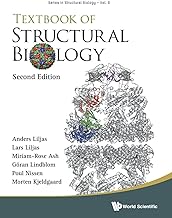Summary of "BIophysical Chemistry 2018 - Lecture 5"
Summary of “Biophysical Chemistry 2018 - Lecture 5”
This lecture covers foundational concepts in statistical mechanics as applied to biophysical chemistry, focusing on energy landscapes, entropy, protein secondary structure, and kinetics of folding. The instructor emphasizes understanding over memorization and aims to connect abstract physical principles to practical protein behavior.
Main Ideas and Concepts
1. Energy Landscapes and Entropy in Proteins
- Energy landscape: A function of energy versus degrees of freedom (e.g., protein conformations). It shows possible states but does not directly include entropy or free energy.
- Depth vs. width of energy wells:
- Depth corresponds to energy minima.
- Width or volume corresponds to the number of microstates (multiplicity) and relates to entropy.
- Entropy influences likelihood: States with larger volumes (more microstates) may be more probable even if their energy is not the lowest.
- Free energy landscape is more complex and less intuitive than the energy landscape because it involves macrostates and is not a simple function of degrees of freedom.
2. Protein Secondary Structure and Stability
- Hydrogen bonding patterns define helices:
- Alpha helix: i to i+4 hydrogen bonds.
- 3₁₀ helix: i to i+3 hydrogen bonds.
- Pi helix: i to i+5 hydrogen bonds.
- Factors favoring alpha helix formation:
- Hydrogen bonds are the dominant stabilizing factor.
- Lennard-Jones interactions slightly favor alpha helices.
- Backbone torsions restrict conformations, reducing entropy.
- Entropy is unfavorable for folding: Folding reduces conformational freedom, which is entropically costly.
- Beta sheets are also stabilized mainly by hydrogen bonds, with weaker contributions from hydrophobic side-chain arrangements.
- Disulfide bonds:
- Provide strong covalent stabilization.
- Reduce entropy but can rigidify proteins for function.
- Tryptophan:
- Bulky, affects protein structure when mutated.
- Acts as an intrinsic fluorophore useful in spectroscopy.
3. Fundamentals of Statistical Mechanics
- Microstates vs. macrostates:
- Microstate: specific detailed configuration of a system.
- Macrostate: group of microstates sharing macroscopic properties (e.g., energy).
- Multiplicity: Number of microstates corresponding to a macrostate; directly related to entropy.
- Entropy (S): Proportional to the logarithm of multiplicity (number of microstates).
- Logarithm in entropy:
- Converts multiplicative probabilities into additive quantities.
- Facilitates handling large numbers and computational convenience.
- Boltzmann distribution:
- Probability of a state with energy ( E ) is proportional to ( e^{-E/(kT)} ).
- Derived without assumptions about the system, universally applicable.
- Partition function (Z):
- Sum over all states of ( e^{-E_i/(kT)} ).
- Knowing ( Z ) allows calculation of all thermodynamic properties.
- Exact calculation is often impossible due to astronomical number of states, but approximations (e.g., simulations) are useful.
4. Temperature and Energy
- Temperature is defined thermodynamically as the derivative of entropy with respect to energy.
- Absolute temperature scale (Kelvin) is introduced for convenience.
- Energy changes on the order of ( kT ) (~0.6 kcal/mol at room temperature) significantly affect state probabilities.
- Adding ( kT ) of energy increases the number of accessible microstates by a factor of approximately 2.7.
5. Phase Transitions and Stability
- Stable states correspond to minima in free energy.
- Phase transitions occur when two stable states coexist, separated by unstable states.
- Macroscopic phase transitions (e.g., ice melting) happen at sharply defined temperatures.
- For small systems like proteins, transitions occur over broader temperature ranges.
6. Kinetics and Reaction Rates
- Stability (thermodynamics) does not guarantee fast transitions; kinetics (rate) matters.
- Transition states correspond to free energy maxima that must be overcome.
- Rate of reaction depends exponentially on the free energy barrier height (( \Delta F )).
- Simple kinetic model: [ \text{time to reaction} \sim \tau e^{\Delta F/(kT)} ] where ( \tau ) is a fundamental timescale.
- Applied to alpha helix formation:
- Initiation has a free energy cost.
- Elongation can be favorable or unfavorable depending on residue type.
- The balance of enthalpy (hydrogen bonding) and entropy determines helix stability and folding rate.
Key Methodologies and Instructional Points
- Approach to complex problems:
- Start with simple assumptions.
- (Note: The summary text was incomplete here; further details were not provided.)
Category
Educational
Share this summary
Featured Products

TEXTBOOK OF STRUCTURAL BIOLOGY (SECOND EDITION)

Biophysical Chemistry (Tutorial Chemistry Texts)

Nonequilibrium Statistical Mechanics

Protein Folding Kinetics: Biophysical Methods

BulkSupplements.com L-Tryptophan Capsules - Tryptophan Supplement, L-Trptophan 500mg - Amino Acid Supplement, Gluten Free - 1 Capsule per Serving, 240 Capsules (Pack of 1)